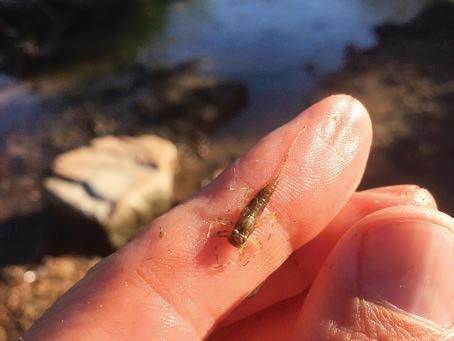
2 minute read
Talking ‘Twin Victories’, new generation speaks
Story of Tuskegee Airmen recounted at Commerce City event

BY SCOTT TAYLOR STAYLOR@COLORADOCOMMUNITYMEDIA.COM
For now, Gabrielle Martin, speaks for her father as well as herself.
“Here we are in 2023, and we are still talking about getting recognition for the Tuskegee Airmen,” Martin said. “You talk about ghting the war. ey had to ght just for the right to be there.”
Martin is the daughter of Capt. Robert Martin, retired, one of the original Tuskegee Airmen, a group of 932 ghter and bomber pilots and their support crews who trained at Tuskegee Army Air eld in Alabama during World War II, breaking records, making history and creating a legacy. Her father died in 2019.
Speaking to a small group Feb. 23 at the Commerce City Civic Center for the city’s Black History Month commemoration, Martin talked about growing up as the daughter of a Tuskegee Airman.

“ ey fought to serve their country and when they came home, they came home to a life of service,” Martin said. “ ey were teachers, instructors. Many stayed in the military to earn higher ranks so they could teach others. Many made a military career, something they could be proud of.” e group was invited to speak by the city’s Diversity, Equity and Inclu- sion group. Mayor Pro-Tem Jennifer Allen- omas, a member of Commerce City’s DEI group, brought her father, a former City Councilor — who represented the same seat his daughter now holds — and a retired member of the U.S. Air Force himself.
She was joined by Daphne Rice-Allen, daughter of Price D. Rice, another member of the Tuskegee Airmen, and by John omas of Longmont, a re-enactor for the Denver-based Hubert L. “Hooks” Jones Chapter of the Tuskegee Airmen, Inc. While omas spoke of their experiences in a deeply segregated U.S. during World War II, based on interviews and conversations with original members, the daughters gave more personal accounts of growing up; learning about their fathers’ sacri ces, what it all meant and how it a ected them.

Twin Victories ey all spoke of twin battles the soldiers needed to ght, against an enemy in war but also against bias and discrimination at home.
Formed near the start of World War II, the Tuskegee Airmen’s rst class of 13 cadets began service in July 1941 in deeply segregated Alabama. ey grew to include nearly 1,000 person- nel — the group includes pilots but also ground crew and support sta — and served with distinction. Of that group, 355 ew some 1,500 missions in Europe between 1942 and 1946. e pilots were mostly African American and were the rst aviation unit of their kind during a time when the U.S. military was still racially segregated and many U.S. states still had Jim Crow laws on their books. e unit had an excellent combat rating, was highly praised by military commanders and earned six Distinguished Unit Citations while its members earned 96 Distinguished e Army began sending ghters from the Tuskegee Airmen’s 332 Air Group, in their distinctive ghters
Flying Crosses.
But members got the sense that they were never meant to succeed. Re-enactor omas explained how the 332 Air Group had trained on used and outdated equipment and monitored closely, with any infraction grounds for washing out of the program. ey could not practically leave the base, since it was located in the heart of Jim Crowe south.
When they nally were deployed, they were given unnecessary missions at rst. ey’d come up to their objective — a bridge to be blown up or a beach to patrolled — to nd that other pilots, their white counterparts, had already completed the mission.
“We said give us something to do, something we can be proud of,” omas said.
But they found their role, protecting the vulnerable, slow-moving bombers, omas said. e Germans had learned that American pilots, seeking to improve their kill ratios, would leave the bombers vulnerable to engage the enemy ghters. en a second wave of German ghters would take out the bomber, he said.










